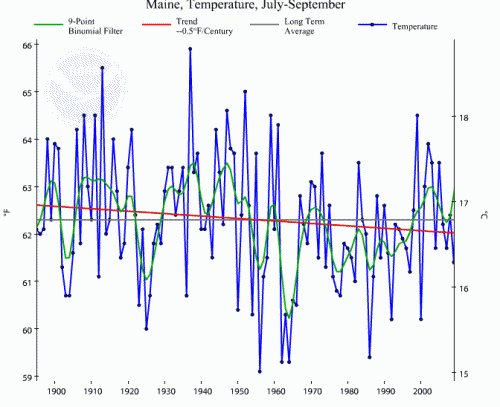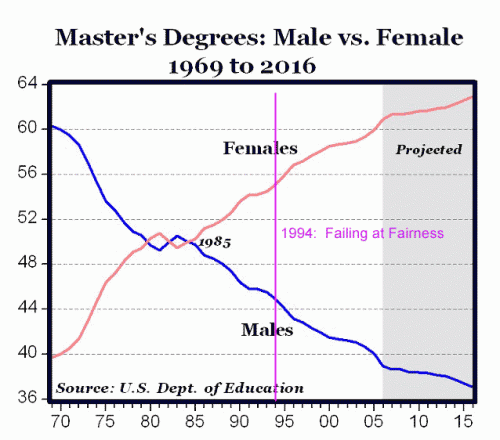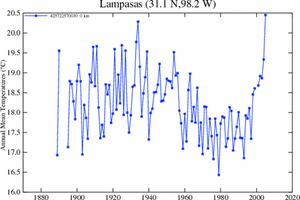The Continuing Climate Disconnect and the Climate Bait and Switch
I am at an impasse. Here is my dilemma: I don't know if the media is purposely obfuscating the climate debate or whether they are just ignorant and scientifically illiterate. For now, because I am a happy soul that does not like making dark assumptions about other people's motivations, so I am going to give the media the benefit of the doubt and just assume they are ignorant. But it is getting harder to reach this conclusion, because for it to be ignorance, it has to be serial ignorance lasting many years and crossing thousands of people.
The other day, in response to an article at Skeptical Science, I wrote about the typical media myths in the climate debate that make actual conversation about the theory so difficult. The first one I listed was this:
- "Climate deniers are anti-science morons and liars because they deny the obvious truth of warming from greenhouse gasses like CO2"
In fact, if you read the article, most of the prominent climate skeptics (plus me, as a non-prominent one) totally accept greenhouse gas theory and that CO2, acting alone, would warm the Earth by 1-1.2C. What we are skeptical of is the very net high positive feedbacks (and believe me, for those of you not familiar with dynamic systems analysis, these numbers are very large for stable natural systems) assumed to multiply this initial warming many-fold.
This is just tremendously frustrating, in part because climate alarmists (at least in the media) don't seem to understand their own theory. I constantly have to patiently explain that the theory of catastrophic man-made global warming (or climate change if you prefer) is a two part theory, and that warming forecasts are based on two independent chained theories: First, CO2 acting as a green house gas incrementally warms the earth and second, large net positive feedbacks in the Earth's climate multiply this initial warming many times. The majority of the warming actually comes from the second theory, not greenhouse gas theory, but every time I am in a debate or interview situation one of the early questions is "how can you deny greenhouse gas theory, it is settled science?" This is what I call the climate bait and switch -- skeptics have issues with the second theory but the media and climate alarmists only want to argue about the first.
Robert Tracinski at the Federalist highlights a really good example of this:
In a CNBC interview, the host asked, “Do you believe that it’s been proven that CO2 is the primary control knob for climate?” Pruitt answered: “No, I think that measuring with precision human activity on the climate is something very challenging to do, and there’s tremendous disagreement about the degree of impact. So no, I would not agree that it’s a primary contributor to the global warming that we see. But we don’t know that yet. We need to continue the debate and continue the review and the analysis.”
This is a pretty reasonable answer. It is simply absurd to argue that CO2 (at a current atmospheric concentration of 0.04%) is the "primary control knob for climate". CO2 is obviously part of a large and complex equation with many, many variables, but calling it the primary control knob is like saying that the sugar industry is the primary control knob for the US economy.
But back to the issue of the climate bait and switch. Here is NPR responding to Pruitt's comments. Can you guess what they say?
Those statements are at odds with an overwhelming body of scientific evidence showing that humans are causing the climate to warm by releasing CO2 into the atmosphere. The view that CO2 is a major heat-trapping gas is supported by reams of data, included data collected by government agencies such as NASA and the National Oceanic and Atmospheric Administration.
Greenhouse gas theory is settled science! But Pruitt has never, in anything I have read, disagreed with greenhouse gas theory. He just thinks the effects have been exaggerated. But here is the media, yet again, ignoring the actual arguments of skeptics and trying to recast their position as denying greenhouse gas theory. The media sets up this false dichotomy that either you accept that CO2 is "the primary control knob of climate" or you deny CO2 is a greenhouse gas at all. They allow no intermediate position, despite the fact that both of these choices are scientifically absurd.
Mr. Tracinski goes on to make the same point I often make, so I will let him do it in his own words since I don't seem to have any success explaining it:
The question is not whether carbon dioxide is a greenhouse gas. The question is whether it is the “primary control knob for the climate.” The question is whether it is the greenhouse gas, the one factor that dominates all other factors.
There is good reason for skepticism. For one thing, just on the “basic science,” Pruitt is absolutely correct. Carbon dioxide is a greenhouse gas, but it is not the most powerful greenhouse gas, by a long shot. Water vapor is far more effective at trapping heat and releasing it back to the atmosphere, primarily because it absorbs a lot more radiation in the infrared spectrum, which is released as heat.
That’s why all of the climate theories that project runaway global warming use water vapor to juice up the relatively small impact of carbon dioxide itself. They posit a “feedback loop” in which carbon dioxide increases temperatures, which increases the amount of water vapor in the atmosphere, which increases temperatures even more. These models need a more powerful greenhouse gas to magnify the effect of carbon dioxide.
But does it really work that way? By how much does water vapor magnify the impact of carbon dioxide? And is that effect dampened by other factors? Consider cloud formation: more water in the atmosphere means more clouds, which reflect sunlight back into space and have a cooling effect that counteracts the warming effect. But by how much?
The answer is that nobody really knows. There are varying estimates for “climate sensitivity,” that is, how sensitive global temperatures are to increases in carbon dioxide. They range from a relatively trivial impact—less than one degree Celsius warming from a doubling of atmospheric carbon dioxide—to more than five degrees.






